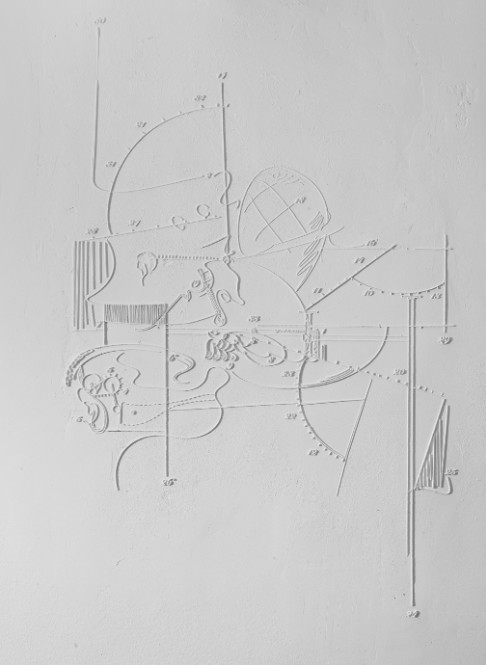Thought About A Thought IV, 2018
molded epoxy clay on wall, paint
140 x 87 cm
Exhibitions
2019, Josse Pyl, 'I Think and I Think I've Thought a Thought', Annet Gelink Gallery, Amsterdam, The Netherlands
I Think and I Think I've Thought a Thought
A thought is formed in the stomach, breathes it through to the chest and neck, which forms its timbre, and then moves through the vocal cords to form its pitch, into the mouth, where the tongue and teeth give its final texture and push the word outside the body, into the air. Josse Pyl’s spatial language investigates the intuition that lies behind our perception of the world. Our understanding of reality is closely linked to the symbols and images that we make, but the silences and unspoken symbols also form our reality. His works show the construction behind the visible signs as well as the invisible sounds that connect one person with another. Pyl has a desire to find a form that expresses our conscious and subconscious thoughts. The drawings and objects can be considered as characters or symbols that are part of a story unfolding gradually in the exhibition space. A physical grammar that forms a separate linguistic world, permeated with its own dreamlike logic that ensures that the familiar forms of communication are made tangible and alienated.
Drawings
Line drawings form the basis of Pyl’s wall drawings as a background to thinking, rather than an observational investigation. While drawing, Pyl looks for his own logic and systems that transform not only a certain idea but also a feeling into a poetic form. While drawing, Pyl analyzes how lines take shape on the paper to investigate how the thoughts, once depicted, are both visual and linguistic. The series of wall work makes visible every point in the drawings where a decision has taken place; the point at which a line and thought starts, bends or ends is connected to a number. Once embedded in the walls, Pyl’s drawings offer a coded explanation of the self-contained history in the space. Line drawing gives Pyl the opportunity to consider the construction of reality by investigating formal conventions of technical drawings.

